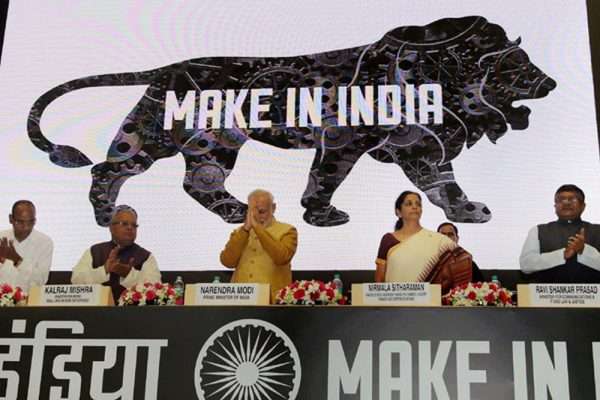Make In India – The New Indian Scheme 2023
Make In India – The New Indian Scheme 2023 Theme: Narendra Modi, who within a matter of months, launched the ‘Make in India’ campaign to facilitate investment, foster innovation, enhance skill development, protect intellectual property & build best-in-class manufacturing infrastructure. Make in India’ recognizes ‘ease of doing business’ because the most essential element to sell entrepreneurship. A range of initiatives have already been undertaken to ease the business environment. The goal is to de-license and de-modify the enterprise in the course of the whole lifecycle. Achievements of the ‘Make in India’ program: With the launch of Make in India, rules and policies are simplified. Now it is much easier to start a company in India. That means Red tape is reduced. India ranked 63rd out of 190 countries in the last World Bank’s Ease of Doing Business Index. Make in India program attracted Foreign Direct Investment (FDI) to India. FDI Equity inflow in Manufacturing Sectors has increased by 76% in FY 2021-22 (USD 21.34 billion) compared to the previous FY 2020-21 (USD 12.09 billion). The India Cellular & Electronics Association (ICEA) in 2018 stated that due to the manufacturing of domestic mobile handsets and components, the country has saved a whopping INR 3 lakh crore rupees of possible outflow in the last four years. This money was saved as the domestically manufactured and assembled handsets replaced the import of completely built units (CBUs). This also provided employment opportunities to approximately 4.5 lakh people. India has emerged as the second-largest mobile phone manufacturer in the world with a 126% jump in production from the financial year 2021-2022, shows government data. The Make in India program has pushed Self-reliance in the defence sector. As of 2021, India’s defence and aerospace manufacturing market has increased to worth Rs 85,000 crore with a private investment of Rs 18,000 crore. Our defence exports increased to Rs 5,711 crore in 2020-21. India had come a long way in the Global Innovation Index (GII) from the 81st rank in 2015 to the 40th rank in 2022. There is a boom of startups in India after launching Make in India. As of 2022, India has more than 100 unicorns (startups with a US$1 billion valuation or above). Several big multinational companies started their manufacturing units in India. New Infrastructure: The availability of modern and facilitating infrastructure is a very important requirement for the growth of the industry. The government intends to develop industrial corridors and smart cities to provide infrastructure based on state-of-the-art technology with modern high-speed communication and integrated logistic arrangements. Existing infrastructure is to be strengthened through the upgradation of infrastructure in industrial clusters. Innovation and research activities are supported through a fast-paced registration system and accordingly, the infrastructure of the Intellectual Property Rights registration set-up has been upgraded. The requirement of skills for the industry is to be identified and accordingly, development of the workforce is to be taken up. New Sectors: ‘Make in India’ has identified 25 sectors in manufacturing, infrastructure and service activities and detailed information is being shared through interactive web-portal and professionally developed brochures. FDI has been opened up in Defence Production, Construction and Railway infrastructure in a big way. New Mindset: The industry is accustomed to seeing Government as a regulator. ‘Make in India’ intends to change this by bringing a paradigm shift in how Government interacts with industry. The Government will partner with industry in the economic development of the country. The approach will be that of a facilitator and not a regulator. Sectoral-Specific Achievements of Make in India: Aerospace & Defence – Indigenous defence products have been unveiled, the Defence Procurement Procedure was amended. Aviation – There was a 5 times increase in FDI, the National Civil Aviation Policy was introduced to boost regional air connectivity, 160 airports, and 18 greenfields airports were approved, and GAGAN was launched as well. Biotechnology – First indigenously developed Rotavirus vaccine was launched, 30 bio incubators and biotech parks are supported, and India’s first Public-Private Partnership agreement was announced between the Indian Council of Medical Research and Sun Pharma. Automotive – There was a 1.7 times increase in the automobile industry; a major investment by global players such as Ford Motors, Mercedes-Benz, and Suzuki Motors was observed. Food Processing – Nine mega food parks were operationalized during 2014-2018, eighty-three cold chain projects were operationalized, and an app called Nivesh Sandhu was launched in 2017. Gems and Jewellery – There was a 4.6 times increase in FDI in the period of 2014-2018, Jewellery Park at Mumbai is being developed. Leather and Leather Products – A program called Indian Footwear, Leather & Accessories Development Programme was launched in 2017, and approximately 4.44 lakh people have been trained. Media and Entertainment – There was a 1.8 times increase in FDI in Information & Broadcasting, the Print Media Advertisement Policy, 2016 was launched, National Film Heritage Mission was launched. Railways – The first semi-high-speed train called Gatimaan Express and a luxury train called ‘Vande Bharat‘ was launched, and an investment of INR 15,000 crore was achieved through Public-Private Partnership. Tourism – Schemes such as Swadesh Darshan and PRASAD were launched. Challenges: Though improved, the ease of doing business in India is not up to the mark. Private firms, especially larger firms are complaining about regulatory obstacles. There is a shortage of skilled manpower in India. Though the situation has improved, still there is a gap between the demand and supply of skilled manpower. Though many industries are planned to be set up and inaugurated, many of those projects are not implemented yet. Many workers in India’s manufacturing companies are getting very low wages. Conclusion: The ‘Make in India’ program is a success in creating a favourable environment for manufacturing companies. Its effect on the Indian economy is clearly visible. The program is helping India in achieving self-sufficiency.
